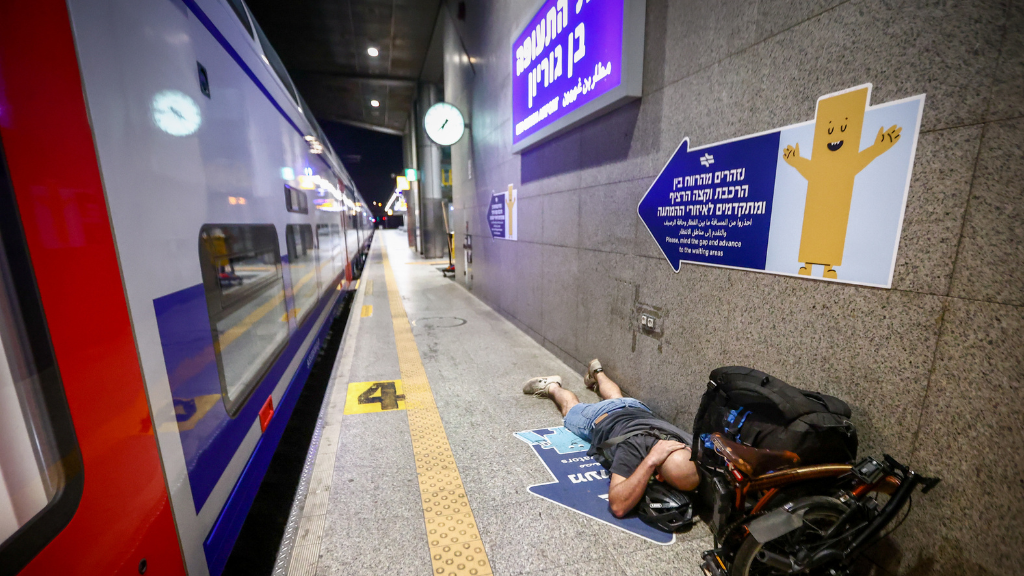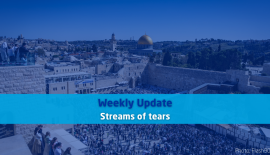Iran launches another attack on Israel with 200 ballistic missiles
On Tuesday afternoon, it became evident that Iran was planning another direct attack on Israel, this time using only ballistic missiles. Earlier this year, on the night of April 14-15, Iran launched a similar attack on Israel, which ended in failure. During that assault, 300 projectiles, including unmanned kamikaze drones, were fired at the Israel. The Israel Defense Forces (IDF), along with a coalition led by the United States and Great Britain, intercepted nearly 99 percent of the projectiles, leaving only one person wounded.
On Tuesday night, October 1, a similar situation unfolded. Of the nearly 200 ballistic missiles launched, a large portion was intercepted by the IDF and the U.S. forces stationed in Iraq and Syria. However, Iran claimed that 80 percent of the missiles reached their targets. The attack forced nearly the entire Israeli population to take shelter in private shelters, known as Maamadim, which have been mandatory in new homes since 2001. Although a few missiles hit buildings, only a few civilians were slightly injured by the exploding rockets. That in itself was a miracle because some of the ballistic missiles fell on residential areas.
The Tehran regime reportedly selected six targets in Israel, including three airbases and the Gilot base in Herzliyah where the Mossad headquarters is located and which also houses IDF intelligence unit 8200. Unit 8200 played a key role in the sabotage of Hezbollah’s communications systems nearly two weeks ago. The fifth target was Gush Dan where some two million live in densely populated neighborhoods. Civilians near the Gilot base reported several blasts on Tuesday. Iran apparently also attempted to strike the Dimona nuclear facility, but all missles were shot out of the sky in the desert.
Iran defended its actions, claiming the attack was in response to Israel’s elimination of Hezbollah leader Hassan Nasrallah, Hamas leader Ismail Haniyeh, and a local commander of the Islamic Revolutionary Guard Corps’ Quds Brigade.
Israel has announced that it will give an appropriate response to Iran’s recent aggression, signaling a shift from its previous actions after the first attack in April. At that time, Israel limited its response to destroying an S-300 anti-missile battery near the nuclear facility in Natanz, Iran. This time, however, the response is expected to include airstrikes on oil facilities and possibly some above-ground nuclear sites. There are also voices calling for the elimination of Iran’s Supreme Leader, Ayatollah Ali Khamenei, which some believe could spark a popular uprising against the regime in Tehran and Qom. Both Prime Minister Benjamin Netanyahu and Defense Minister Yoav Gallant have stated that Iran will pay a heavy price for its aggression against Israel.
The Israeli government is in contact with the United States government and hopes for American involvement in military action against Iran. Officials in Washington have already signaled that Iran crossed a “red line” with this attack on Israel. U.S. cooperation with Israel in responding to the missile bombing is highly desirable because it would enable a destructive attack on Iran’s nuclear weapons program. However, anonymous government officials in Washington suggest that the Biden administration is seeking a diplomatic solution to the conflict with Iran and does not want a war in light of the upcoming presidential election.
What is evident is that there is now a seventh front in Israel’s multi-front war. The other fronts are Lebanon, Judea and Samaria, Gaza, Yemen, Syria and Iraq. Iran has also issued death threats against Prime Minister Benjamin Netanyahu and is demanding European countries to curb Israel’s actions, warning of a regional war if they fail to do so. The Iranian military further threatened widespread destruction of Israel’s infrastructure if an attack on Iran is launched. It warned the U.S. and other countries not to cooperate with Israel and that they could expect their interests and troops in the Middle East to be attacked by the IRG. Billboards appeared across Iran today showing a ballistic missile with the Hebrew text reading: “You will cry a lot.”
Lebanon front
Rocket fire from Lebanon intensified following the Iranian attack, despite the fact that the Israeli Air Force (IAF) was conducting pre-emptive strikes against Hezbollah launch sites IAF warplanes were active throughout the evening and night, conducting operations against Hezbollah and patrolling the airspace over northern Israel. In addition, the air force has begun regularly bombing Hezbollah positions in the capital Beirut after issuing evacuation orders a civilians. During the night from Tuesday to Wednesday, for instance, eleven airstrikes were carried out on Hezbollah-controlled neighborhoods in Beirut over a span of two hours.
On the ground, direct confrontations between units of the IDF and Hezbollah occurred for the first time. The IDF ordered the evacuation of residents from twenty-five more villages north of the port city of Tyre prior to IAF bombing of Hezbollah facilities, which are mostly located in residential homes. The IDF also deployed two more brigades to reinforce troops on the front lines. An entire division was transferred to the northern front. Since early this morning, Hezbollah has already launched 100 rocket and drone attacks across northern Israel and some ballistic missile strikes in the Tel Aviv area. A spokesman for the IDF said that air-raid sirens were sounding almost every five minutes in northern towns and villages. During operations in Lebanon, IDF soldiers found very large quantities of heavy weapons and rockets of various kinds. They also found a detailed plan for an October 7-style invasion of northern Israel.
Terror attack in Jaffa
In a shooting attack in Jaffa on Tuesday night, seven Israeli civilians were killed by two Palestinian terrorists from Hebron, illegally residing in Israel. The two first attacked an IDF soldier on a Tel Aviv light rail train, stabbing him with a large knife and stealing his automatic weapon. They then opened fire on the train’s passengers, killing six and critically wounding three others, one of whom later died in the hospital. The two terrorists were eventually shot dead by a civilian and responding police officers. Prior to the deadly attack, the two had entered a mosque, ordering those inside to until the assault was completed.







